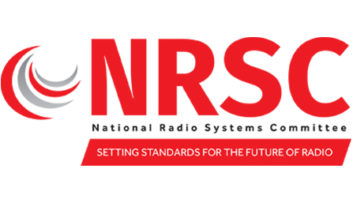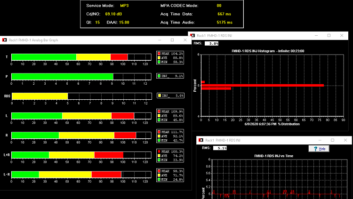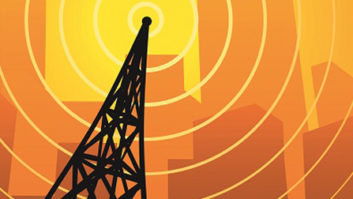For a little over 20 years now, each AM station has been charged with the annual task of making equipment performance measurements. These measurements, to be made in accordance with the provisions of Section 73.44 of the commission”s rules, result in yearly documentation at a specific point and time in space that a transmitter plant meets the occupied bandwidth and harmonic limits spelled out in the rules. Although these requirements have been in place for two decades, and indeed were bantered about for several years prior to their implementation, I still get the occasional call from a station unaware that such measurements are a necessity each and every time the blue marble makes a full course around the sun.
The genesis of the measurement requirement can be tied to the commission”s desire to enhance AM broadcasting during the 1980s. During this time, the quality of AM receivers was suffering. Additionally, there were many more AM stations available on the dial, and interference to first adjacent facilities, especially at night, was becoming a more serious issue.
The NRSC-1 standard, developed in 1986 when I was still in high school, discussed pre-emphasis, and set the bandwidth limit of AM audio to 10 kHz. A year later, the National Radio Systems Committee, a group composed of AM station representatives, manufacturers, and suppliers authorized the release and publication of the standard by both the Electronic Industries Association, and NAB. Compliance with the standard was at that time voluntary.
Further adjustment to the standard took place over the next year, and in 1988, the emission limitations we live with today were released by NRSC. In short order the commission adopted the standard, and on April 27, 1989 released the First Report and Order in MM Docket 88-376. While creating the annual measurement schedule, the commission in its wisdom also allowed for a grace period. If you were in compliance with NRSC-1 prior to June 30, 1990, or from the date of original commencement of operation, then you were considered to be in compliance with the emission mask requirements until June 30, 1994, and did not have to make emission measurements unless directed to do so by the commission.
The most desirable piece of gear for making the emission measurements is a spectrum analyzer. Appropriate analyzers must be able to provide a peak hold duration of 10 minutes, no video filtering, and a 300 Hz resolution bandwidth. Perhaps recognizing that a spectrum analyzer was, and still is, a high dollar item, the commission allowed for other specialized receivers or monitors to be utilized. However, if any disputes over accuracy arose, measurements via a spectrum analyzer would take precedence.

The second paragraph of 73.44 spells out the emission limitations. Specifically in the range of 10.2 to 20 kHz, emissions must be 25 dBc. Further out in the range of 20 to 30 kHz from carrier, the attenuation level is an additional 10 dB at 35 dB down. In the 30 to 60 kHz range, the attenuation level is a function of the frequency, and is defined as [5+1 dB/kHz] below carrier. This range creates the negative sloping line portion of the emission mask. At 60 up to 75 kHz above and below the carrier frequency, the attenuation level returns to a constant level of 65 dB below carrier level. Finally, stuff beyond 75 kHz out must be attenuated to the lesser of 43+10 log (Power in watts) and 80 dB. This last expression allows for a constant level at powers greater than 5000 Watts, and lesser values at lower power. Should harmful interference be found to exist, a station may be directed to achieve greater levels of attenuation than the specified mask.
The emission measurements are, according to the rules, to be made at a distance of approximately one kilometer from the antenna. At the bottom end of the dial, a wavelength is roughly 555 meters, so at one click out, you find yourself at, or well into, the far field range. At this point the radiation has settled down, and the odd propagation effects observable closer in have since faded away. Since at least 80 dB of range must be observable in order to demonstrate compliance, it may be necessary to adjust the measurement location distance somewhat.
The measurement distance may need to be adjusted due to the power level of the station. Additionally, it may be found in some instances that a distance of one kilometer provides accessibility problems. Other factors necessitating adjustment of the measurement distance could include overhead power lines, or reradiating structures that may tend to distort the accuracy of the measurements.
Harmonics, especially the second and third, are well known gremlins in many transmission systems. As multiples of the fundamental carrier frequency, they are necessarily located beyond 75 kHz from the carrier. Their limits therefore fall in the power dependent range discussed above. Although a spectrum analyzer can be used for these measurements, it tends to be simpler to make them using a calibrated field intensity meter, and applying the math to obtain the harmonic to carrier ratio.
An additional problem with the second harmonic occurs when two stations where the frequency of one is twice that of another are relatively close to each other. If, for instance, your station uses 630 kHz, while another facility in the region is on 1260 kHz, the second harmonic of your carrier plops right down on top of the frequency of your neighbor.

The potential for the generation of intermodulation products should also be considered when making NRSC measurements. The presence of another AM station in proximity, or combined into the same antenna system makes this issue a very real possibility. Traps in the antenna system are generally utilized to keep the transmitters from talking to each other; however, these occasionally wander, or may be insufficient to attenuate properly the generated spurs.
For instance, two stations close by on 1340 and 1450 have the potential for generating products on 1230 kHz and 1560 kHz. These spurious products are of course located well beyond 75 kHz of either carrier frequency. As a result, they fall in that 80 dB attenuation range. Additionally stations close by each other should evaluate spurs caused by the harmonics and fundamental frequencies of each other.
In general, most modern transmitters out by themselves in a cornfield should pass the emission and harmonic tests with flying colors. Substantial variances between measurement sets, however, may be indicative of subtle problems with the rig that may not be overtly noticeable by power levels and the like. Splatter above the mask levels may result from issues in the final amplifier stage, while unexplainable spurs from a lone transmitter may indicate PDM problems. Not only do NRSC measurements keep neighbors happy, but they also provide an additional check on the performance of your facility.

A colleague and friend of mine has quipped that NRSC measurements are the “annual albatross” due to the resources spent on their acquisition. Too often, the holders of the purse strings also view the measurements as a fatuous exercise. Like any coin, there are always two sides, and the NRSC measurements are in reality another beneficial tool in the box.
Regardless of your view of them, they must be performed no less frequently than once every 14 months, and are one of the things the commission looks for when paying a visit. Since the requirements have been around for two decades, it is a challenge to have to explain to the inspector why they are absent from your files.
Don’t be that guy.










